Introduction to the Importance of User-Friendly Website Design
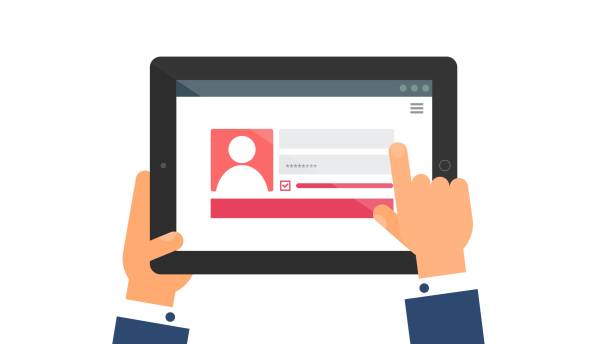
In today’s digital world, merely having a website is not enough; what matters is the quality of its user experience.
#User_Friendly_Website_Design means creating a digital environment where visitors can easily interact with it, find the information they need, and achieve their goals.
This descriptive and educational approach is considered the foundation of success for any online business.
A user-friendly website not only increases customer satisfaction but also directly impacts conversion rates, time spent on the site, and ultimately, business profitability.
In fact, if your website is complex or confusing for users, they will quickly leave it and turn to competitors.
Therefore, investing in user-friendly website design is a necessity, not a luxury choice.
This approach goes beyond visual aesthetics and includes various aspects such as loading speed, intuitive navigation, relevant content, and accessibility for all users.
Do not forget that the ultimate goal of any website is to serve the user, and the smoother and more enjoyable this service is, the greater the likelihood of your website’s success.
In the following sections, we will delve into more details on how to achieve this goal and provide practical solutions.
Did you know that poor online store design can drive away up to 70% of your potential customers? Rasaweb revolutionizes your sales with professional and user-friendly e-commerce website designs.
✅ Significant increase in sales and revenue
✅ Full optimization for search engines and mobile
⚡ [Get Free Consultation from Rasaweb]
Key Principles of User Experience (UX) in Web Design

To achieve user-friendly website design, a deep understanding of User Experience (UX) is vital.
This specialized and guiding section explores seven fundamental UX principles that must be considered at every stage of design.
The first principle is “Usability”; the site should be easy to use, and users should be able to perform their tasks quickly and without hassle.
The second principle is “Useful”; the content and functionalities of the site should meet the real needs of the user.
Third, “Desirable”; the design should be visually attractive and emotionally pleasing so that the user is inclined to return.
Fourth, “Findable”; users should be able to easily find the information and features they are looking for.
Fifth, “Accessible”; the site must be usable for individuals with special needs (such as visual or hearing impairments).
Sixth, “Credible”; users should trust the information and services provided on the site.
And seventh, “Valuable”; the site should create value for both the business and the user.
Each of these principles directly influences how the user perceives and interacts with the website.
Adhering to these principles helps you create a website with high ease of use that not only meets user needs but also provides an unforgettable and positive experience for them.
A truly #User_Centric_Web_Design requires attention to each of these dimensions.
The Role of User Interface (UI) in Gaining User Satisfaction

While User Experience (UX) deals with how the user feels when using the site, User Interface (UI) relates to the visual and interactive aspects of a website.
This descriptive and educational section examines the importance of UI in completing a user-friendly website design.
UI includes the arrangement of elements, colors, fonts, icons, and all components that the user interacts with.
An attractive and functional UI paves the way for an excellent UX.
Choosing appropriate colors, clear visual hierarchy, and effectively using whitespace all contribute to the readability and aesthetics of the site.
Buttons and links should be easily discernible and show clear reactions to user actions.
Using subtle animations and visual feedback can make the user experience more engaging and enjoyable.
The main goal of UI is to make #User_Interaction_with_the_Site as #Smooth and #Pleasant as possible.
| UI Element | Impact on User-Friendliness |
|---|---|
| Color Scheme and Palette | Creating mood, branding, aiding readability and content separation. |
| Typography (Fonts) | Text readability, visual identity, impact on information comprehension speed. |
| Whitespace | Reducing visual clutter, increasing focus on content, improving aesthetics. |
| Icons and Images | Faster message communication, attracting attention, visual user guidance. |
| Buttons and Call-to-Action | Guiding the user to take important actions, improving conversion rates. |
Careful attention to UI details ensures that a user-friendly website not only functions well but also looks visually appealing and professional.
The intelligent combination of UI and UX is the key to building websites that are both efficient and enjoyable for users.
Ultimately, a strong user interface ensures that information is conveyed correctly and the user achieves their goal without confusion.
The Importance of Site Speed and Responsiveness
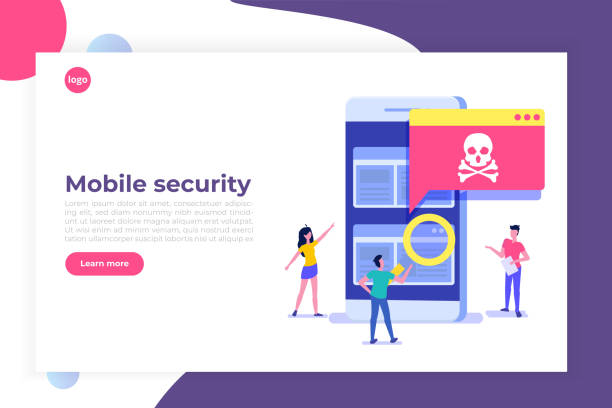
In the age of speed and instant access, #Website_Loading_Speed and #Responsiveness are two crucial factors for a user-friendly website design.
This analytical and guiding section examines these two topics.
Research has shown that users expect a website to load in less than three seconds; any delay can lead to site abandonment and loss of potential customers.
Many factors affect site speed, including image optimization, reducing unnecessary code, using caching, and choosing suitable hosting.
High speed not only improves user experience but also directly impacts the site’s ranking in search engines (SEO), as Google and other engines prioritize faster sites.
On the other hand, given the variety of devices including mobile, tablet, and desktop, your website must be responsive; meaning its design should automatically adjust to the screen size of the user’s device.
This means providing a seamless visual and functional experience, regardless of the device used.
A user-friendly website is always and everywhere accessible, ensuring that the user can easily view and interact with content without needing to zoom or horizontal scroll.
Neglecting either of these two factors can severely damage the user experience and nullify your efforts to have a successful site.
Are you tired of your company’s website not meeting your expectations? With Rasaweb, design a professional website that showcases the true face of your business.
✅ Increased acquisition of new customers and sales leads
✅ Increased credibility and brand trust among your audience
⚡ Get a free website design consultation!
Content is King: Engaging and Organized Content
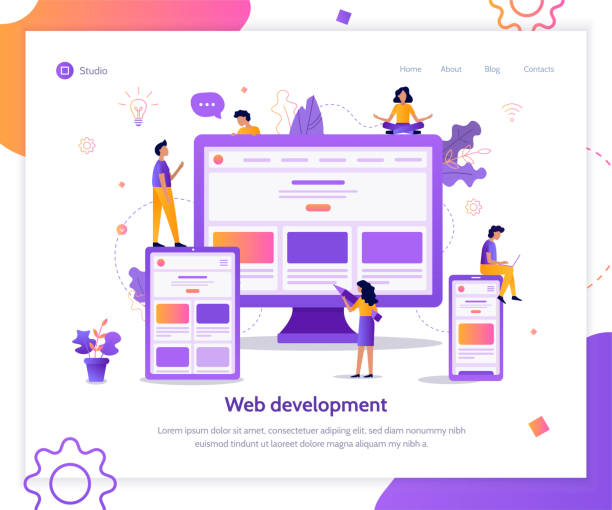
In the process of user-friendly website design, content plays a pivotal role.
This guiding and specialized section delves into how engaging and organized content can revolutionize the user experience.
Your content should not only be informative and relevant but also presented in a way that is easily digestible and readable.
Using clear headings, short paragraphs, bulleted lists, and relevant images all contribute to improved readability.
Rich and high-quality content, in addition to attracting users, is also crucial for #Search_Engine_Optimization (SEO) and helps your site achieve a higher ranking in search results.
However, merely having good content is not enough; its organization is equally important.
Proper #Information_Architecture helps users easily navigate your site and find the information they are looking for.
This includes logical categorization of content, using clear labels, and creating a logical hierarchical structure for pages.
A website with optimal ease of use utilizes its content as a powerful tool to guide and inform the user.
The goal is for the user to be able to find answers to their questions with minimal effort.
This approach not only increases user satisfaction but also strengthens their trust in your website and brand, leading to increased retention and return visitors.
Your content should be responsive and structured so that the user does not need to search elsewhere for additional information.
Easy Navigation and Transparent Information Structure
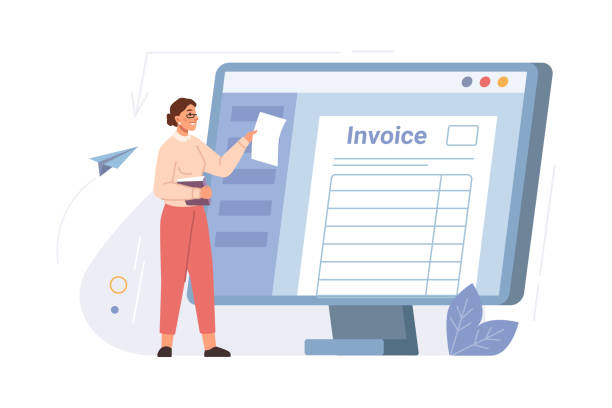
One of the most important pillars of user-friendly website design is providing easy navigation and a transparent information structure.
This educational and descriptive section explains the importance of this topic.
Users should be able to access any part of the site they want without confusion and with the fewest clicks.
A clear and logical main menu, the use of breadcrumbs to show the user’s path, and relevant internal links all contribute to this goal.
The #Clearer the #User_Path_on_the_Site, the more pleasant their experience will be.
Information Architecture is the foundation of good navigation.
This includes how your website’s content and pages are categorized and organized.
A logical structure prevents user confusion and helps them quickly find the information they need.
For example, grouping similar products into one category, or placing frequently asked questions in a separate section, are examples of good information architecture.
Additionally, the use of a search bar with appropriate functionalities is very important, especially for sites with a lot of content.
This section is not entertaining, but it is vital.
Powerful search capability allows users to quickly reach any section they are looking for, even if it is not clearly displayed in menus or categories.
Finally, navigation design should be done from the user’s perspective, not just from the designer’s or business owner’s perspective.
Conducting user tests and gathering feedback can help you find the best structure for your site and create a truly user-friendly website.
User Feedback and Continuous Design Improvement
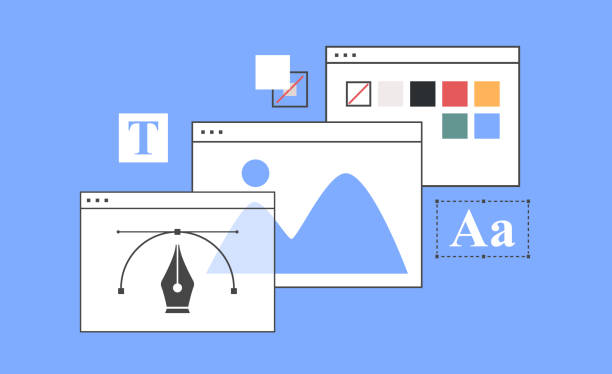
No user-friendly website design achieves perfection on the first attempt.
This analytical and news-focused section emphasizes the importance of gathering #User_Feedback and #Continuous_Design_Improvement.
After launching the website, your work has just begun.
You must constantly #Monitor and #Analyze site performance and ask users to express their opinions.
Web analytics tools like #Google_Analytics can provide valuable data about user behavior, including popular pages, bounce rate, time spent on the site, and navigation paths.
Additionally, conducting #Usability_Testing allows you to identify problems and weaknesses of the site from the perspective of real users.
These tests can include user scenarios, questionnaires, and interviews.
Surveys and direct feedback forms are also excellent ways to gather qualitative insights.
All this data and feedback must be carefully analyzed so that you can implement the necessary changes to improve user experience and #Ease_of_Use_on_the_Web.
Remember that your website is a living entity that requires continuous maintenance and updates to keep pace with changing user needs and new technologies.
The #Feedback_Loop and #Continuous_Improvement are the cornerstones of long-term success for any user-friendly website design.
This approach enables you to evolve your site based on real data and user needs.
| Feedback Collection Method | Advantages | Disadvantages |
|---|---|---|
| Analytical Tools (Google Analytics) | Quantitative data, identification of behavioral patterns, high scalability. | Does not provide reasons for behavior, requires expert analysis. |
| Usability Testing | Identifying deep problems, understanding the ‘why’ of user behavior, qualitative insights. | Costly, time-consuming, requires a small sample. |
| Surveys and Feedback Forms | Gathering direct feedback, flexibility in questions. | Low response rate, potential for bias in responses. |
| Heatmaps | Displaying user click and scroll points, visualizing behavior. | Does not provide the ‘why’ behind behaviors. |
By utilizing these methods, you can continuously improve the quality of your website’s user experience and ensure that your site always meets user needs.
The Impact of SEO and Accessibility on User-Friendliness

Two other important factors that influence user-friendly website design are Search Engine Optimization (SEO) and Accessibility.
This specialized and guiding section examines the overlap of these two concepts with user experience.
SEO means optimizing your website for higher ranking in search results, but it goes beyond merely keywords and backlinks.
A well-optimized site for SEO is usually a site that also performs well in terms of user-friendliness.
High loading speed, clear navigation, quality content, and responsiveness (mobile-friendliness) are all SEO factors that directly contribute to user experience.
Search engines increasingly rely on #User_Behavior_Signals such as time on page and bounce rate for ranking sites, which is further proof of the deep connection between SEO and UX.
On the other hand, accessibility means ensuring that your website is usable by all individuals, regardless of their abilities.
This includes providing alternative text for images, using appropriate color contrast, keyboard navigation, and compatibility with screen readers for visually impaired individuals.
Designing for accessibility is not only an #Ethical_Responsibility but also opens up a vast market of users who might otherwise not be able to use your site.
A user-friendly website provides easy access for everyone, thereby expanding its audience.
Ultimately, focusing on SEO and accessibility not only helps with better search rankings and adherence to ethical principles but also leads to a highly usable site design that provides a positive and flawless experience for all its visitors.
These two concepts are complementary and should be incorporated from the outset of the design process.
Are you bothered by losing customers who have visited your site to make a purchase?
Rasaweb is your specialized solution for a successful online store.
✅ Significant increase in your online sales
✅ Building trust and professional branding with customers⚡ Get a free consultation from Rasaweb experts!
Challenges and Solutions for User-Friendly Website Design

Creating a user-friendly website design is not without its challenges.
This thought-provoking and analytical section addresses some of the most common obstacles and solutions for overcoming them.
One of the main challenges is #Aligning_User_Needs_with_Business_Goals.
How can we build a site that is both enjoyable for users and achieves business objectives (such as sales or lead generation)? The answer lies in a balanced approach: design should always be user-centric, but with business goals in mind.
Conducting thorough user research (persona research) and defining user journeys can help align these two goals.
Another challenge is the #Increasing_Complexity_of_the_Web.
With new technologies and higher user expectations, how can we keep the design simple and intuitive? The solution is to follow the principle of “Less is More”.
Avoid visual clutter, keep navigation simple, and refrain from features that do not genuinely add value.
#Continuous_Trial_and_Error and #Data_Analysis are also crucial for identifying and addressing weaknesses.
The third challenge is #Maintaining_Design_Consistency across different pages of the site.
How do we ensure that the user experience is unified and predictable across the entire site? Using a #Comprehensive_Design_System that includes style guides, UI components, and design principles can help maintain consistency.
This system allows different teams to work cohesively and ensures that all elements are visually and functionally integrated.
Finally, the challenge is the ever-changing user expectations and web technologies.
How can we stay current with trends? The answer lies in #Continuous_Learning and #Industry_Monitoring.
User-friendly website design is not a static process, but a continuous journey of improvement and adaptation.
Embracing these challenges and finding creative solutions is the key to success in this field.
Are you ready to turn these challenges into opportunities?
The Future of Web Design and New Trends
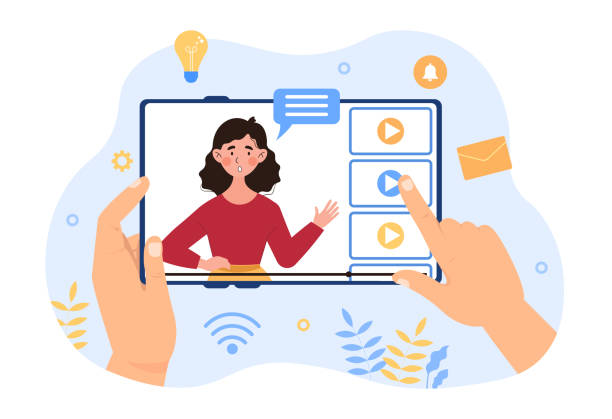
The world of web design is rapidly evolving, and the future of user-friendly website design will be influenced by new trends and emerging technologies.
This news and entertaining section takes a look at these trends and their impact on user experience.
One of the most important trends is #Artificial_Intelligence (AI) and #Machine_Learning (ML), which are increasingly playing a role in personalizing user experience.
From intelligent chatbots that answer user questions to algorithms that suggest personalized content based on user behavior, AI can help #Improve_Interaction and #User_Engagement with the site.
Another trend is #Voice_UI and #Voice_Interactions.
With the increasing popularity of voice assistants like Siri and Alexa, designing websites for voice interactions is becoming increasingly important.
This means considering how users search with voice commands and providing appropriate voice responses.
#Virtual_Reality (VR) and #Augmented_Reality (AR) are also opening new horizons for user experience.
Imagine users being able to view products in 3D or even interact with your brand in a virtual space.
These technologies have great potential to create immersive and engaging experiences.
Furthermore, #Minimalist_Design and #Microinteractions will continue to maintain their popularity, as they contribute to simplicity and efficiency in the user experience.
These trends indicate that user-friendly website design is not limited to appearance alone, but rather means creating a comprehensive and intelligent experience that keeps pace with the changing needs and expectations of users.
Are you ready to prepare your website for this exciting future? These changes provide new opportunities for innovation and creating truly unique experiences.
Frequently Asked Questions
And other advertising services of Rasaweb Advertising Agency
- Smart Sales Automation: A fast and efficient solution for online growth focusing on marketing automation.
- Smart Digital Branding: A professional solution for online growth focusing on precise audience targeting.
- Smart SEO: An effective tool for digital branding with the help of attractive UI design.
- Smart Advertising Campaign: An innovative service to enhance customer behavior analysis through precise audience targeting.
- Smart UI/UX: Designed for businesses looking to increase click-through rates by customizing the user experience.
And over hundreds of other services in the field of internet advertising, advertising consultation, and organizational solutions
Internet Advertising | Advertising Strategy | Advertorials
Resources
Comprehensive Website Design Training
Key Principles of User Experience (UX)
Increase Website Speed
Importance of SEO in Website Design
❓ Are you looking for significant growth for your business in the digital world? Rasaweb Afarin Digital Marketing Agency, with expertise in SEO, targeted advertising, and secure and professional website design, paves the way for your success.
📍 Tehran, Mirdamad Street, next to Bank Markazi, Southern Kazeroon Alley, Ramin Alley, No. 6

